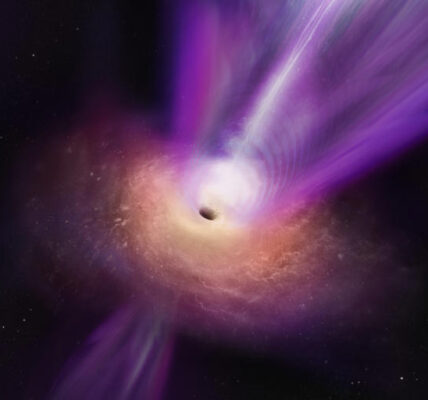Hidden Lunar Structures: Unveiling the Moon’s Ancient Secrets
Hidden Lunar Structures revealed by China’s Chang’e-4 mission offer unprecedented insights into the moon’s ancient past, uncovering layers of lava, craters, and more beneath its surface.
Hidden Lunar Structures have long captivated scientists and space enthusiasts alike. The moon, our closest celestial neighbor, has been a symbol of mystery and wonder for centuries. Now, thanks to the groundbreaking efforts of China’s space program, we’re beginning to uncover the secrets buried deep beneath its surface.
In 2018, the Chang’e-4 lander, part of the Chinese National Space Administration (CNSA), made history as the first spacecraft to land on the far side of the moon, often referred to as the “dark side.” This mission has provided us with invaluable data, shedding light on the hidden lunar structures that lie beneath the moon’s surface.

© Provided by Indy 100
Chang’e-4: A Mission of Discovery
The Chang’e-4 mission has been pivotal in our quest to understand the hidden lunar structures that form the moon’s surface. Since its successful landing, Chang’e-4 has captured stunning images of lunar craters and collected crucial mineral samples. These efforts have given us a glimpse into the composition of the moon’s upper layers, which have remained largely unexplored until now.
Earlier this year, the findings from Chang’e-4 were published in the Journal of Geophysical Research: Planets, offering the world a detailed look at the hidden lunar structures that lie beneath the surface. The top 130 feet (40 meters) of the lunar surface, according to the study, are composed of multiple layers of dust, soil, and fragmented rocks. These layers have been shaped by billions of years of cosmic events, including the impacts of meteorites and other space debris.
The Impact Crater and Hidden Lava Layers
One of the most fascinating discoveries related to these hidden lunar structures is the identification of a crater buried within the moon’s surface layers. This crater, according to Jianqing Feng, an astrogeological researcher at the Planetary Science Institute in Tucson, Arizona, was formed when a large object collided with the moon. Feng, who co-led the analysis of the Chang’e-4 data, explained that this impact played a significant role in shaping the hidden lunar structures we see today.
But the story doesn’t end with the crater. Beneath the surface, Feng and his team discovered five distinct layers of lunar lava, each representing a different chapter in the moon’s geological history. These layers, formed billions of years ago, provide evidence of volcanic activity that once dominated the lunar landscape. The hidden lunar structures revealed by Chang’e-4 suggest that the moon was once much more geologically active than previously thought.

© Provided by Indy 100
The Formation and Evolution of Hidden Lunar Structures
To fully appreciate the significance of these hidden lunar structures, it’s important to understand the moon’s origins. Scientists believe that the moon formed approximately 4.51 billion years ago, following a colossal impact between Earth and a Mars-sized object. This event, known as the Giant Impact Hypothesis, resulted in the ejection of debris from Earth that eventually coalesced to form the moon.
In the millions of years that followed, the moon was bombarded by space debris, leading to the creation of numerous craters and fractures on its surface. These impacts played a crucial role in shaping the hidden lunar structures we observe today. As molten magma from the moon’s mantle rose to the surface through these cracks, it spread across the landscape, forming the layers of lava that Feng and his team have now uncovered.
However, the Chang’e-4 data also revealed that the thickness of the volcanic rock decreases as it approaches the moon’s surface. According to Feng, this suggests that the moon’s volcanic activity gradually diminished over time. This cooling process led to a decrease in volcanic activity, eventually rendering the moon “geologically dead” about a billion to 100 million years ago.
Could Magma Still Lurk Beneath the Moon’s Surface?
Despite the apparent geological dormancy of the moon, the hidden lunar structures uncovered by Chang’e-4 have sparked new questions about the possibility of residual volcanic activity. Feng and his colleagues have proposed that there could still be magma buried deep beneath the moon’s surface, even if it’s no longer active at the surface level.
This tantalizing possibility suggests that the moon may still hold more secrets waiting to be uncovered. The hidden lunar structures mapped by Chang’e-4 are just the beginning of what promises to be an exciting new chapter in lunar exploration. As the mission continues, Feng and his team hope to expand their research, delving even deeper into the moon’s history and uncovering the hidden lunar structures that have yet to be explored.
The Future of Lunar Exploration
The discoveries made by Chang’e-4 are a testament to the power of exploration and the potential for uncovering hidden lunar structures that could reshape our understanding of the moon. With each new mission, we gain a deeper appreciation for the complexity and history of our natural satellite.
As China’s space program continues to advance, we can expect even more groundbreaking discoveries that will further illuminate the hidden lunar structures beneath the moon’s surface. These findings not only enrich our knowledge of the moon but also pave the way for future missions that could eventually lead to human settlements on the lunar surface.
In conclusion, the hidden lunar structures revealed by Chang’e-4 represent a significant milestone in our quest to understand the moon’s geological history. From ancient craters to layers of volcanic rock, these structures provide a window into the moon’s dynamic past and offer clues about its future. As we continue to explore the moon and uncover its secrets, we come one step closer to unraveling the mysteries of our celestial companion.
ALSO READ:
Cosmic Water Reservoir: 5 Astonishing Discoveries



